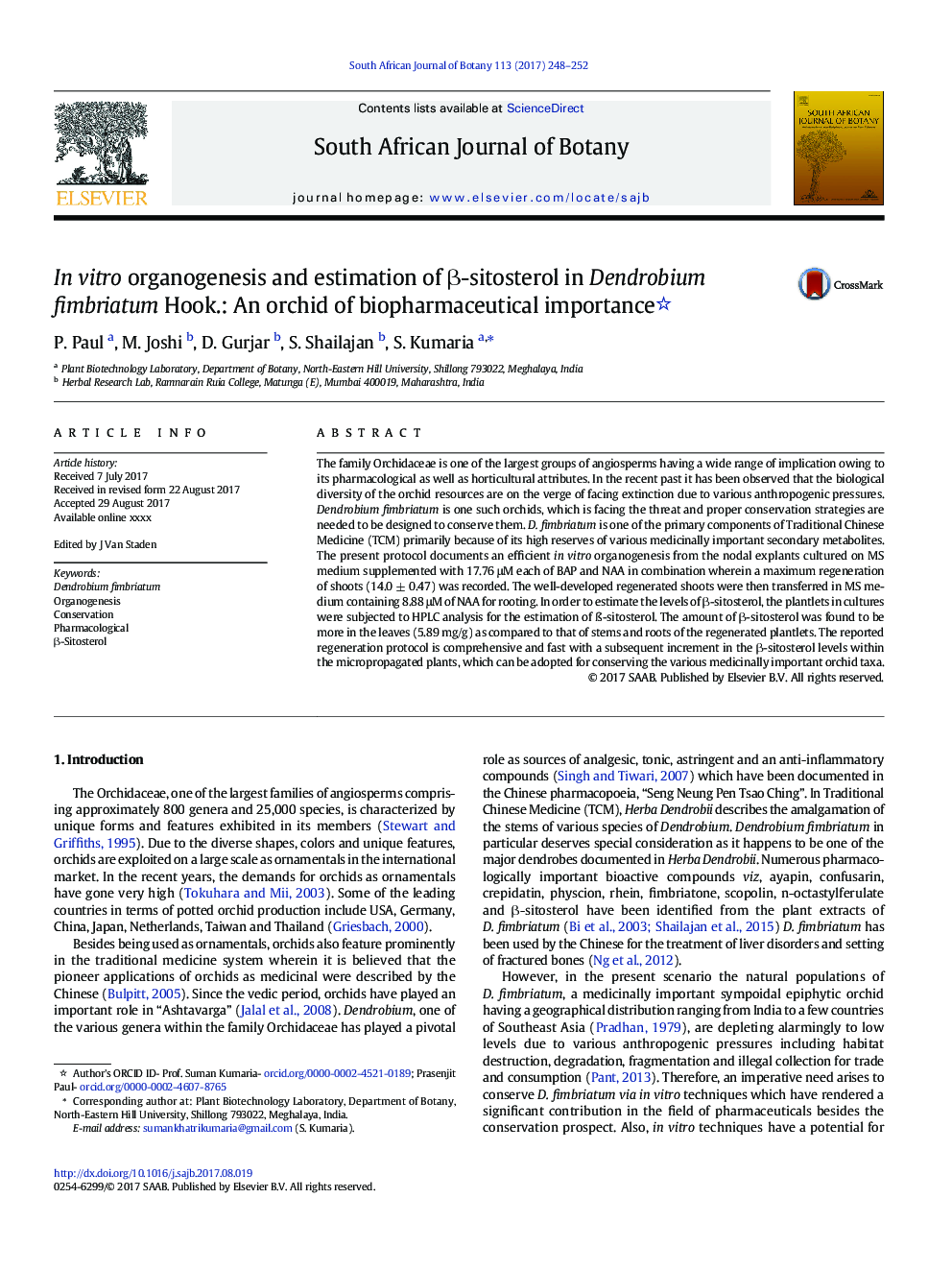| Article ID | Journal | Published Year | Pages | File Type |
|---|---|---|---|---|
| 5762911 | South African Journal of Botany | 2017 | 5 Pages |
Abstract
The family Orchidaceae is one of the largest groups of angiosperms having a wide range of implication owing to its pharmacological as well as horticultural attributes. In the recent past it has been observed that the biological diversity of the orchid resources are on the verge of facing extinction due to various anthropogenic pressures. Dendrobium fimbriatum is one such orchids, which is facing the threat and proper conservation strategies are needed to be designed to conserve them. D. fimbriatum is one of the primary components of Traditional Chinese Medicine (TCM) primarily because of its high reserves of various medicinally important secondary metabolites. The present protocol documents an efficient in vitro organogenesis from the nodal explants cultured on MS medium supplemented with 17.76 μM each of BAP and NAA in combination wherein a maximum regeneration of shoots (14.0 ± 0.47) was recorded. The well-developed regenerated shoots were then transferred in MS medium containing 8.88 μM of NAA for rooting. In order to estimate the levels of β-sitosterol, the plantlets in cultures were subjected to HPLC analysis for the estimation of Ã-sitosterol. The amount of β-sitosterol was found to be more in the leaves (5.89 mg/g) as compared to that of stems and roots of the regenerated plantlets. The reported regeneration protocol is comprehensive and fast with a subsequent increment in the β-sitosterol levels within the micropropagated plants, which can be adopted for conserving the various medicinally important orchid taxa.
Related Topics
Life Sciences
Agricultural and Biological Sciences
Agronomy and Crop Science
Authors
P. Paul, M. Joshi, D. Gurjar, S. Shailajan, S. Kumaria,
